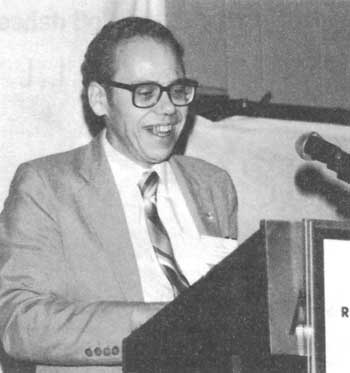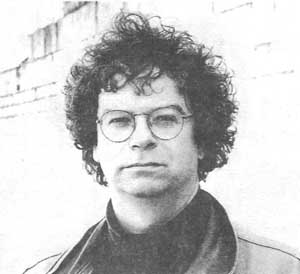Probing Look at ‘Capital Punishment Industry’ Affirms Expertise of Auschwitz Investigator Leuchter
The Execution Protocol: Inside America’s Capital Punishment Industry, by Stephen Trombley. Hardcover. New York: Crown, 1992. (Softcover. New York: Anchor Books, 1993.) 342 pages. Photographs. Index.
When French professor Robert Faurisson and other revisionist skeptics first began asking tough questions about how, precisely, the infamous gas chambers at Auschwitz were built and operated, defenders of the Holocaust story responded by declaring that such inquiries were simply not permissible. In a statement issued in February 1979, and published in the prominent French daily Le Monde, a group of 34 French intellectuals boldly declared: “The question of how technically such a mass murder was possible should not be raised. It was technically possible because it occurred… There is not nor can there be a debate over the existence of the gas chambers.”
While the Holocaust lobby was suppressing awkward questions about the principal murder weapon used in what is said to be history’s greatest crime, skeptics organized their own forensic investigations. The first and most important of these was conducted in February 1988 by an American execution hardware specialist named Fred Leuchter.
In April 1988 Leuchter testified under oath about his investigation and findings at the “Holocaust trial” in Toronto of German-born publisher Ernst Zündel. In a document that is now widely known simply as The Leuchter Report, he laid out his findings in detail, explaining each step of his on-site investigation. “It is the best engineering opinion of this author,” his Report concluded, “that the alleged gas chambers at the inspected sites could not have then been, or now be, utilized or seriously considered to function as execution gas chambers.”
Leuchter’s findings, which have been subsequently confirmed by other independent forensic investigators, shatter the keystone of the Holocaust legend – the Auschwitz gassing story.
With many tens of thousands of copies of The Leuchter Report in circulation around the world, in all the major languages, and through speeches (including addresses at the IHR Conferences of 1989, 1990 and 1992), the impact of this one man’s work has been tremendous.
Damage Control
Alarmed by this, the “Never Forgive, Never Forget” brigade wasted no time taking counter-measures. “Nazi hunter” Beate Klarsfeld announced that Fred Leuchter “has to understand that in denying the Holocaust, he cannot remain unpunished.”
Jewish organizations launched a vicious smear campaign to destroy his reputation and ability to make a living. Leading the charge was Shelly Shapiro and her group, “Holocaust Survivors and Friends in Pursuit of Justice,” which called Leuchter a fraud and imposter, claiming he lacked qualifications as an execution equipment specialist. (For more on this, see the Winter 1992–93 Journal, pp. 421–492.)
With the cooperation of mainstream journalists and editors, this campaign was successful. Leuchter’s contracts with state governments to manufacture, install and service execution hardware were cancelled, and he was driven into semi-hiding, forced from his home in Massachusetts to take up private work elsewhere. No American has suffered more for his defiance of the Holocaust lobby.
Incontestable Expertise
In spite of the widely disseminated lies about his competence, the facts are incontestable. A feature article in The Atlantic Monthly (Feb. 1990), for example, factually described Leuchter as
the nation’s only commercial supplier of execution equipment … A trained and accomplished engineer, he is versed in all types of execution equipment. He makes lethal-injection machines, gas chambers, and gallows, as well as electrocution systems …
Similarly, a lengthy New York Times article (Oct. 13, 1990), complete with a front-page photo of Leuchter, called him “the nation’s leading adviser on capital punishment.”
An In-Depth Look
The most detailed treatment of Leuchter and his career is provided in The Execution Protocol, a examination of the US system of capital punishment by an English-born writer and film-maker who lives in Los Angeles and London. This disturbing but fascinating book is based on extensive interviews with individuals on both sides of what author Stephen Trombley calls “America’s Capital Punishment Industry.”
The book’s prominent treatment of Leuchter relies heavily on a lengthy interview with him at his home and workplace near Boston. Included are photographs showing Leuchter by the control module of his lethal injection machine, and pictures of an electric chair and an lethal injection apparatus he built.
Refuting the main lies that have been spread about him, Trombley confirms (p. 9) that Leuchter is, in fact, “America’s first and foremost supplier of execution hardware. His products include electric chairs, gas chambers, gallows, and lethal injection machines. He offers design, construction, installation, staff training and maintenance.” Leuchter also has a number of impressive inventions to his credit, Trombley notes (pp. 35, 71), including a “modular electric chair – the most advanced ever built,” and the lethal injection machine “by which executions are now carried out in five states.”
Trombley takes a close look at each of five methods of execution that are used in the three dozen states where capital crimes are punished by death: lethal injection, electric chair, gas chamber, firing squad and hanging. Tracing the history and problems of each method, he explains in grim detail just how things can go wrong in an execution. As it happens, quite a few executions are botched, resulting in deaths that are painful for the prisoner and terrifying for witnesses.
If the rope used to hang a prisoner is not just the right length, thickness or strength, the prisoner can slowly and painfully strangle to death (rather than die instantly with a broken neck). In some botched cases the prisoner is decapitated, or the rope snaps, causing the terrified but still conscious prisoner to plunge to the ground. Firing squads sometimes miss the target pinned to the prisoner’s heart, causing him to slowly bleed to death. Even under ideal conditions, firing squad executions are messy. An improperly built or maintained electric chair will literally fry the condemned prisoner, causing excruciating pain. Gas chamber executions are especially likely to be botched, with the condemned prisoner dying in painful, drawn out agony.
Gas Chamber Dangers
Killing someone in a gas chamber is very dangerous for those who carry out the execution, above all because the body of the dead prisoner is saturated with lethal gas. After the execution, explains Leuchter (p. 98), “You go in. The inmate has to be completely washed down with chlorine bleach or with ammonia. The poison exudes right out through his skin. And if you gave the body to an undertaker, you’d kill the undertaker. You’ve got to go in, you’ve got to completely wash the body.”
Bill Armontrout, warden of the Missouri State Penitentiary in Jefferson City, confirms the danger (p. 102): “One of the things that cyanide gas does, it goes in the pores of your skin. You hose the body down, see. You have to use rubber gloves, and you hose the body down to decontaminate it before you do anything [else].” (Armontrout also testified as an expert witness in the 1988 Zündel trial in Toronto, confirming Leuchter’s expertise as America’s foremost gas chamber specialist.)
Gas chambers shouldn’t be used at all, says Leuchter (p. 13): “They’re dangerous. They’re dangerous to the people who have to use them, and they’re dangerous for the witnesses. They ought to take all of them and cut them in half with a chain saw and get rid of them.” Of the five execution methods used in the United States, he prefers electrocution because it is the least painful, least problem prone, and least costly.
With a career built on the motto “Capital punishment, not capital torture,” Leuchter takes pride in his work. He is glad to be able to ensure that condemned prisoners die painlessly, that the personnel who carry out executions are not endangered, and that taxpayer dollars are saved.
Fair Treatment
Trombley reports with remarkable fairness on Leuchter’s investigations of “gas chambers” at the sites of wartime camps, his testimony in the 1988 Zündel trial, and the campaign against him, including his arrest and expulsion from Britain in November 1991.
Writing with praiseworthy restraint, Trombley volunteers no opinion of his own about Leuchter’s controversial investigations on Zündel’s behalf, or his motives in speaking out on this emotion-laden issue, but instead permits the execution hardware expert to speak for himself. Leuchter told the author that he when he agreed to carry out the Auschwitz investigation for Zündel, “he fully expected to find evidence of gas chambers” and “was surprised that he didn’t.” (p. 93)
In response to the author’s question, “Do you believe that the Holocaust happened?,” Leuchter said (p. 94):
I believed there had been a Holocaust. I believed I would find gas chambers. I told Ernst Zündel – he was positive I wouldn’t find them – I told him that if I did find them, or even that [if] these facilities had the capability of being gas chambers, I was going to report such. I was like most Americans and probably most people all over the world, they believed that it happened. I believed what I’d been taught in school. I know that the facilities that everybody points to weren’t gas chambers.
I think probably there was a Holocaust, but I think it depends upon how one defines “Holocaust.” There are serious questions that have to be asked and answered about that whole period in our history …
Because the author was sloppy in checking facts, this book is not without defects. A good example is the way he confuses British historian David Irving with French scholar Robert Faurisson (pp. 84–85). Trombley tells readers that Irving
had long maintained that a study of executions by lethal gas in the United States would help to “prove” that the Nazi gas chambers never existed. He argued that American prisons are the only place where cyanide gas has been used to kill human beings deliberately; and that American prison wardens who have carried out gas executions could be important sources of evidence which could disprove the Holocaust “myth.”
Trombley goes on to assert that Irving contacted Leuchter to carry out the investigation for the Zündel trial. In fact, it was Faurisson who had long stressed the importance of US gas chambers in understanding the alleged wartime German gas facilities. And it was Faurisson, not Irving, who first established contact with Leuchter in early 1988.
Trombley also asserts that The Leuchter Report has been published in the United States by the “Institute for Historical Research” (p. 87). While it is true that the Institute for Historical Review distributes the Report, it is actually published by others.
In spite of such flaws, this well written and balanced work performs an important service, not least because it authoritatively establishes that Fred Leuchter was indeed “America’s first and foremost supplier of execution hardware” at the time he carried out his forensic on-site investigation of the Auschwitz “gas chambers.” The Execution Protocol thus vindicates Leuchter and those who have defended him, and debunks the most mendacious of the Holocaust lobby’s many lies about him.
Hostility Toward Damaging Truth
“…Men seek to avoid being deceived less than they seek to avoid being injured by deception. They detest illusion not so much as the noxious consequences of certain types of illusion. In a similar, limited sense, men also want the truth; they welcome agreeable, life-sustaining consequences of truth, are indifferent toward pure knowledge that brings no consequences, and are downright hostile toward possibly damaging and destructive truth.”
—Friedrich Nietzsche, Über Wahrheit und Lüge im aussermoralischen Sinne (“On Truth and Falsehood in the Extra-Moral Sense”), 1873.
Bibliographic information about this document: The Journal of Historical Review, vol. 17, no. 2 (March/April 1998), pp. 34-36
Other contributors to this document: n/a
Editor’s comments: n/a


